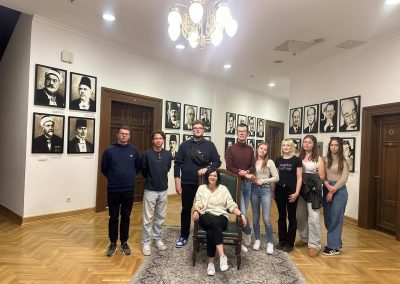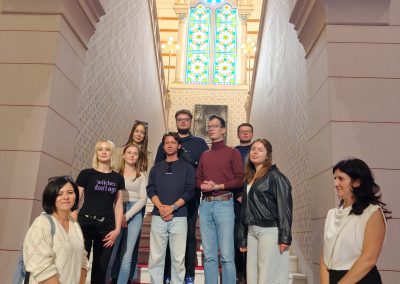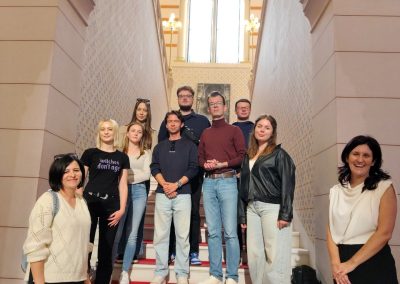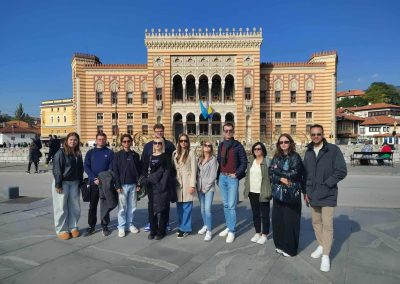Vijesti Informativnog centra o Međunarodnom krivičnom sudu za bivšu Jugoslaviju (MKSJ) Sarajevo
Students from Poland, accompanied by their professors, visited the Sarajevo Information Centre and City Hall
Students from Poland, accompanied by their professors, organized a visit to the Sarajevo Information Centre on the ICTY and the City Hall. The group, which studies international humanitarian law, transitional justice, and the causes of war, visited the City of Sarajevo as part of a study trip organized by the University of Rzeszów.
The purpose of the study visit was to learn more about the history, culture, and heritage that Bosnia and Herzegovina and the City of Sarajevo have preserved and nurtured through their long tradition.
The third day of the students’ trip was dedicated to exploring locations crucial for understanding the contemporary history of Sarajevo and the cultural heritage of Bosnia and Herzegovina.
The research group visited the mountains surrounding the city – areas from which Sarajevo was shelled during the siege (1992–1995). During the visit, participants also had the opportunity to visit the Olympic Village, built for the 1984 Winter Olympic Games.
The next stop on the tour was the Sarajevo City Hall, one of the city’s most recognizable architectural landmarks. During their visit, the students learned about the history and architecture of the building. The Information Centre on the ICTY Sarajevo is located within the City Hall.
As part of the museum complex, the students toured the authentic Tribunal courtroom no. 2, where individuals accused of war crimes committed in the former Yugoslavia were tried. The courtroom was brought directly from The Hague after the ICTY was closed. This made Sarajevo the first city after Nuremberg to have an original courtroom from an international court where war crimes trials were held.
Afterward, the students visited the central part of the Centre’s exhibition, dedicated to presenting the work and contribution of the ICTY through infographics depicting all individuals convicted by the Tribunal. Accompanying photographs, excerpts from testimonies, statements, images, and maps used as evidence in the Tribunal’s proceedings were also presented to the students.
The day concluded with a visit to the Sarajevo Siege Museum, where students could view numerous movable exhibits documenting the everyday life of residents during the siege.
University of Rzeszów, International Crimes Research Club, International and European Law Research Club
#studytrip #Balkans #Sarajevo #URlaw





